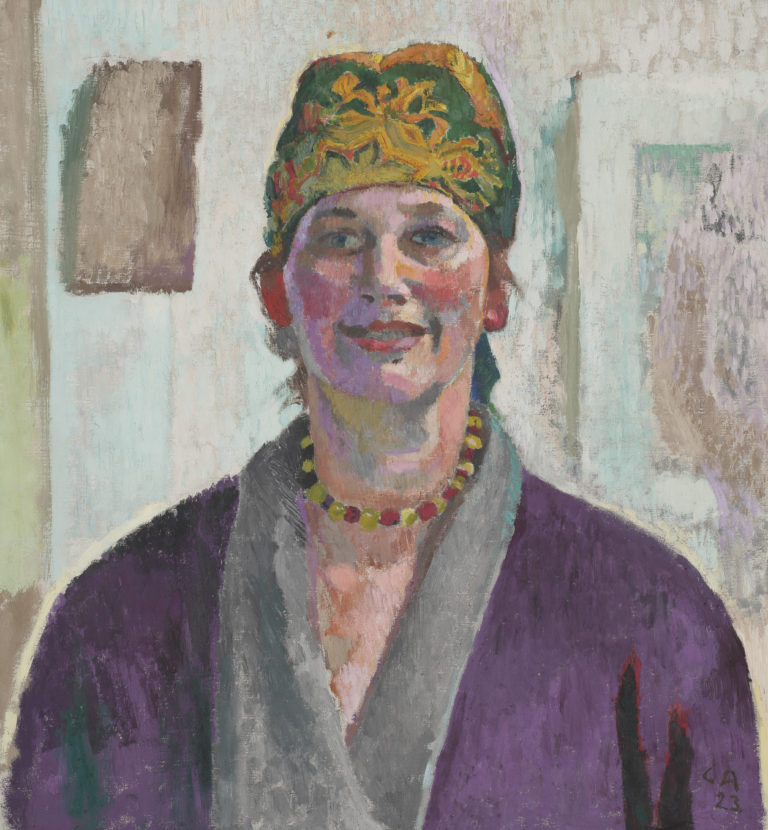Exposé actuellement
The CollectionBibliography
Caroline Bourgeois and Jean-Pierre Criqui, Albert Oehlen: Cows by the Water, exh. cat. Venice, Palazzo Grassi, Venice, Marsilio, 2018.
Judicaël Lavrador and Françoise Cohen, Albert Oehlen, exh. cat. Nîmes, Carré d’art – Musée d’art, Paris, Archibooks + Sautereau, 2011.
Ralf Beil (ed.), Albert Oehlen. Selbstportrait mit 50millionenfacher Lichtgeschwindigkeit. Peintures/Malerei 1980-2004, exh. cat. Lausanne, Musée cantonal des Beaux-Arts, Salamanca, Domus Artium, Nuremberg, Kunsthalle Nürnberg, Zurich, JRP Ringier, 2004.




Having trained at the Hamburg Hochschule für bildende Künste in the late 1970s, Albert Oehlen is part of the generation of artists who have focused on painting and its potential for criticism as a reaction against minimalist and conceptual art. In 1981, when he produced this painting, he had his first solo exhibition and initiated his collaboration with Martin Kippenberger and Werner Büttner.
Untitled thus dates from the very beginning of the artist’s career, and as such is deeply influenced by the brushwork of the Neue Wilden (New Fauves), typified by a powerful sense of expression and a return to figurative art. For Oehlen, however, the key question was how to keep contemporary painting beyond the boundaries of conformism, as indicated by the title of his first canvas, Gegen den Liberalismus (Against Liberalism, 1980, private collection). He rejects the notion of pictorial virtuosity, both in brushwork and composition. Yet the work’s expressive aura and its perfectly balanced composition, falling neatly into two halves – dark at the bottom and pale at the top – simply punctuated by two iconographic elements with powerful connotations, the cross and the skull, make it tempting to suggest that Oehlen is a virtuoso master of anti-virtuoso paintings. The ample application of thick paint, to the point that in places it has dripped, in shades from white to black via a whole palette of dark, ‘dirty’ colours, mean Ohne Titel can be read as the young Oehlen’s manifesto: as he stated in 1991, ‘The aim of our stage at that point was to torture painting with motifs that were as striking as possible, and above all burdened with associations, to leave technical constraints behind’. While the cross and the skull refer both to the history of painting and of Germany itself, the key issue at stake is the relationship to the very materiality of painting, probing the conditions for its potential survival.